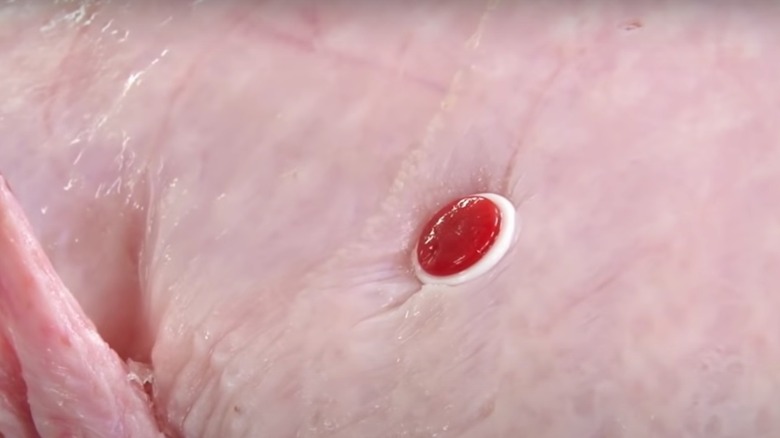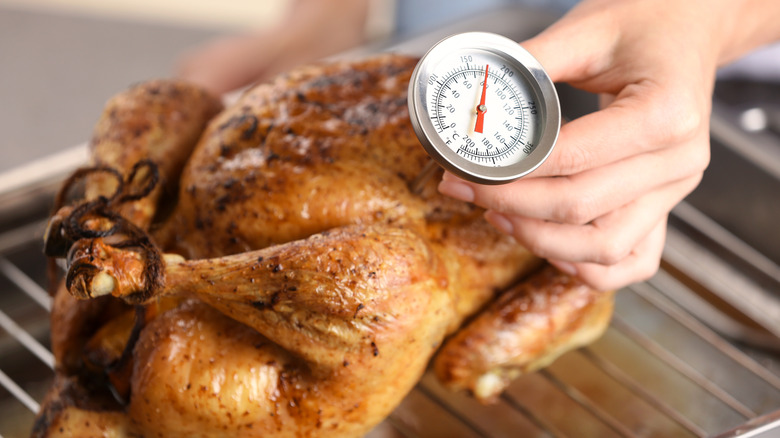Gordon Ramsay's Juicy Tip For Knowing When Your Turkey Is Ready
The anticipation of a traditional roasted turkey is enough to make any chef's heart race. But how do you know when the bird is truly ready to take center stage on your table? Achieving the ideal balance of crisp, golden-brown skin and juicy, flavorful meat requires precision, and a keen understanding of cooking time and temperature.
For chef Gordon Ramsay, known for being a stickler in the kitchen, there's an easy tip for how to tell exactly when your turkey has reached that perfect mix of juicy and fully cooked, and all you need is a skewer. According to Ramsay's roast turkey recipe, about 30 minutes before the estimated roasting time is up, stick a skewer into the bulkiest part of its leg, allowing some of the juices to run out. If the juices run clear, your bird is ready for resting. If the juices are pink, the turkey will need more time in the oven. Ramsay advises roasting for another 15 minutes before checking again.
How reliable are pop-up timers in turkeys?
Despite their widespread use, it's been proven that pop-up turkey timers aren't accurate when gauging the doneness of your bird. These timers, often included with store-bought turkeys, are designed to pop up when they reach a preset temperature. However, pop-up timers can be unreliable, with some popping at a temperature that's too low and others set to pop at a much higher than recommended temperature. Relying solely on a pop-up timer might result in an overcooked or undercooked turkey.
For safe consumption, the internal temperature of a turkey needs to be at least 165 degrees Fahrenheit, according to the U.S. Department of Agriculture. It's crucial to measure the temperature in three parts of the turkey, avoiding contact with bones, to ensure that the entire bird has reached a safe temperature. This temperature guideline is set by food safety standards to eliminate harmful bacteria and ensure the turkey is thoroughly cooked, reducing the risk of foodborne illnesses. Using a reliable meat thermometer is the best way to accurately assess the internal temperature of the turkey and guarantee a safe and delicious meal.
Ramsay adds oil to amp up the juiciness of turkey
According to Gordon Ramsay, the cardinal sin of turkey preparation is a dry bird. We've already got the chef's top tip for checking to see whether the turkey is thoroughly cooked, but how should the dish be prepped in the first place? Ramsay recommends making a seasoned butter mixture, including lemon zest and juice, salt, pepper, chopped parsley, pureed garlic, and a touch of olive oil.
"Put a touch of olive oil in there. That stops the butter from burning," Ramsay advises. "Turkey is a very, very, very lean bird, and it dries out, so it's so important to make sure that we help it to cook perfectly."
Once your flavored butter is ready, gently separate the turkey skin from the meat with your hand and work the mixture up underneath the skin. Be careful not to completely break the skin away from the meat as your butter mixture will drip out once it starts melting as opposed to infusing into the meat.


